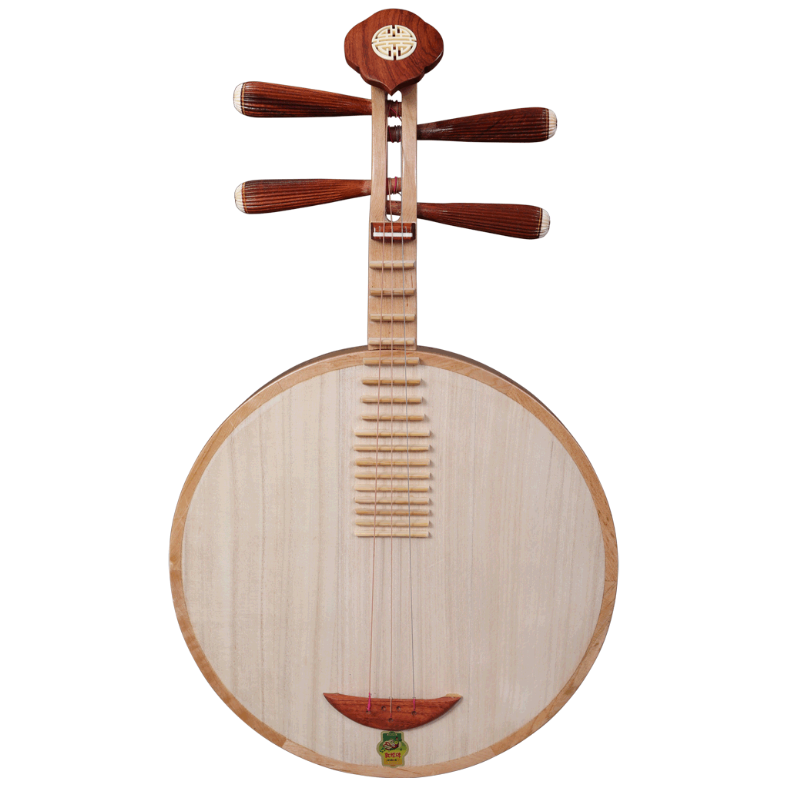How to play Yueqin's tuning table
There are two kinds of tuning methods for Yueqin: one is folk music tuning CFCF; the other is opera music, the tuning is the first tuning #C, #G, mainly for Peking opera music, no matter what sound is played as (3). Yueqin has a lot of playing skills, but usually the right hand uses methods such as playing, plucking, picking, long wheel, and strumming, while the left hand uses methods such as pushing, pulling, kneading, and shifting fingers.

The basics of playing the Yueqin with the right hand are: playing, plucking, picking, and wheeling are called "basic skills". The method is to hold the shrapnel tightly with the index finger and thumb of the right hand, form a 45-degree angle between the wrist and the forearm, use the power of the wrist to play the upper and front strings of the bergamot, repeatedly strum, and evenly strum, remember not to play strong or weak. After the right hand is basically proficient, cooperate with the left hand. The method of the left hand is to use the thumb to hold the neck of the piano, and the other four fingers use the fingertips to play on the frets, remember to use the part just ahead of the fingertips. When the finger is raised, it should not be too high or too high, which will affect the speed. In addition, there are methods such as push, pull, and finger movement. Beginners can start training with scale exercises, starting from sixteenth notes, eighth notes, and quarter notes, from slow to fast, and repeated practice, requiring smooth melody, uniform notes, and granularity in each note.
After the scale practice is proficient, you can carry out finger shifting practice and sound climbing practice, which are indispensable basic skills in playing music. In addition, when playing a piece of music, it is necessary to grasp the different contents in the piece of music and deal with different changes. If the strength and amplitude of plucking and plucking are not used accurately, the meaning of the work will be destroyed. For example: the introductory part of the prelude to the Yueqin solo "A Million Heroes Crossing the River". This cannot be dealt with simply by playing and plucking, but by using a long wheel and controlling the volume, because the introductory part of this piece at this time expresses the tranquility on the eve of the Huaihai War.
One of Yueqin's right-hand methods, strumming, is also a commonly used method in playing music. For example: after the introduction of "A Million Heroes Crossing the River", a strong harmony suddenly pops up. At this time, the playing method is strumming, and the music shows that the powerful offensive of the Chinese People's Liberation Army has begun. It should be noted that strumming cannot be used indiscriminately. It must match the content of the song.
"Picture" is divided into positive and negative. The positive plucks are plucked three times, and the reverse plucks are plucked four times, such as a piece of music in the dance drama "The Red Detachment of Women". In the performance of this piece of music, the right wrist must be decisive and not sloppy, otherwise the popped music will have no impact, and the sound will not be grainy.
The reverse method is commonly used. For example: in the modern Peking Opera "Azalea Mountain", Ke Xiang sings "Lan Yunfei", and when he is in a heavy heart, he uses the anti-pinch. Positive and negative chords are often used in Peking Opera music accompaniment. It should be emphasized that no matter the front or back, the left and right hands must be relaxed. With the change of the music, you will encounter difficult jumping positions. If the position of the frets is too tight, it will affect the tone and speed.
 渝公网安备 50010702504639号
渝公网安备 50010702504639号